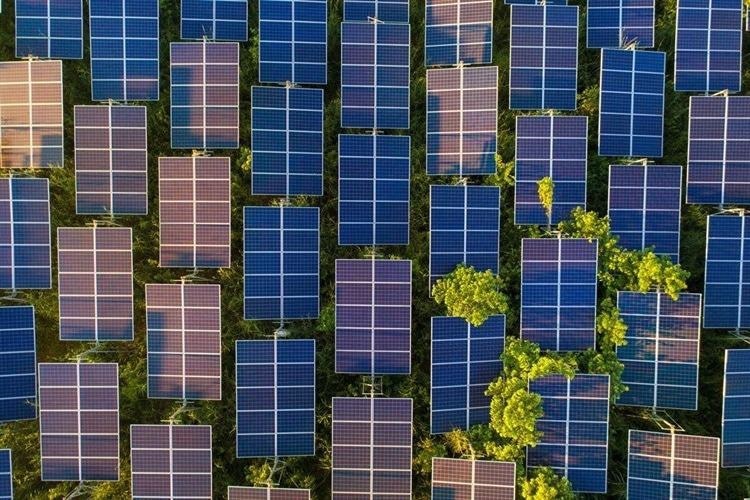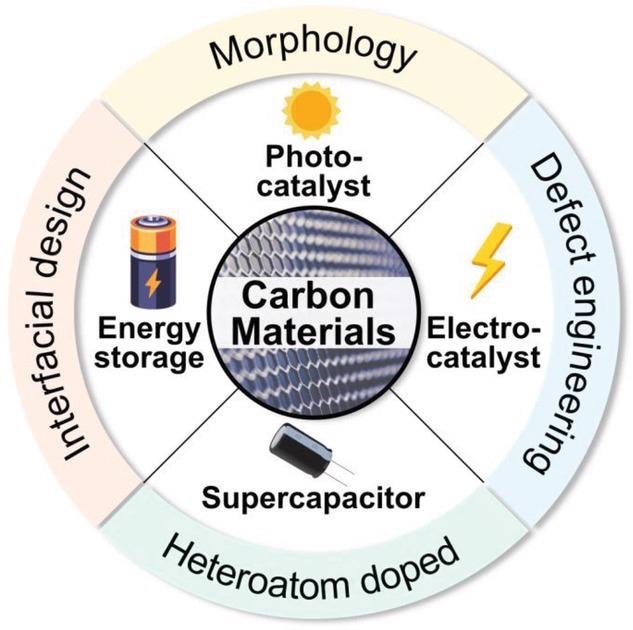A recent study published in the journal Small focuses on nanoengineering carbon materials such as graphene and carbon nanotubes for renewable energy generation.

The pursuit of green, carbon-neutral energy sources is a long-standing worldwide priority for resolving the continuing climate crisis. To tackle this, carbon nanomaterials as energy production and storage materials have been considered as a potential solution.
These materials are cost-effective, plentiful, and ecologically harmless with a diverse range of binding configurations and allotropes. However, there are still several hurdles in producing and functional efficiency of these carbonaceous materials.
Photocatalytic Materials for Solar Energy Production
To tackle environmental concerns, interest in developing photocatalytic nanomaterials that harness the available solar energy for pollution control applications has increased. The spontaneous production of ammonium from nitrogen (i.e., the nitrogen reduction process) can be exploited to generate cleaner energy using a holistic approach.
This strategy considers all functional aspects, including N2 engagement, charge transport to chemisorbed nitrogen, interfacial charge, energy collection, and active site rebuilding when a voltage is applied to the surface.
Use of Graphdiyne for Hydrogen Evolution Reaction
The hydrogen evolution process (HER) by electrocatalytic water separation has shown potential as an alternative energy source. Despite the excellent electrochemical properties of metal-free carbon materials, a significant performance difference remains between carbon and metal-based electrode materials in HER.
This gap can be closed by incorporating graphdiyne, a two-dimensional carbon monolayer composed of hybridized carbon molecules, into a three-dimensional carbon fiber network to serve as a model electrode material for determining the HER function at the atomic scale. The three-dimensional permeable conductive surface is advantageous for charge transportation and gas discharge efficiency, as well as for offering a high electrocatalytic contact area.

Schematic of nanoengineering design of carbonaceous materials for energy applications. Image Credit: Ong, W.-J.
High-Capacity Sodium-Ion Batteries with N2-doped Carbons
While research into renewable energy sources such as solar power has gained significant attention, one major issue is that its accessibility varies significantly throughout the year across the globe.
As a result, a high-storage system should be created to complement the growth of renewable energy technologies. This may be accomplished by using the effect of pore design and chemical composition on nitrogen-doped carbons in sodium battery cells.
Nitrogen is reported to have a beneficial effect on sodium absorption by attaching sodium ions at the edge/defect regions while the porous structural patterns maintain sodium inside. As a consequence, the system is very stable, retaining 90% of its bulk sodiation capability after five cycles.
Hollow Porous Carbon Nanofibers for Li-S batteries
Additionally, the production of distributed hollow porous carbon nanofibers (HPCNs) as sulfur hosts for Li-S electrodes has shown potential for sustainable energy production.
The HPCNs can encapsulate sulfur inside their highly porous surfaces, giving them superior cycling ability, retaining 89 percent of their capacity after 100 cycles, and achieving 99 percent of Coulombic efficacy. Additionally, the enhanced efficiency is linked to the catalyst's improved photocatalytic effectiveness, conductance, and capacity to withstand the volume change of sulfur species during the charge/discharge process.
Point-defect Engineering of C3N4
The use of point-defect engineering to modify graphitic carbon nitride C3N4 is an efficient way of circumventing some of the difficulties associated with electrocatalysis for energy generation. This method also applies to utilizing carbon nanocomposites as anodes for Li-ion batteries.
First-principle experiments show the significance of flaw reactions in nanocarbon composites. In this regard, different flaw kinds with 2D graphene structures and their lithium binding energy serve as indicators in influencing Li growth behaviors.
Future Perspective
In conclusion, there has been a drive to develop enhanced characterization methods for probing the production and response processes at the interface of nanomaterials. Furthermore, appropriate testing techniques should be established to reliably compare and assess the capabilities of these nanomaterials across several research groups globally and in comparison to commercial reactors.
Therefore, these obstacles must be addressed to push nanomaterial engineering toward superior efficiency in energy storage applications. Developing high-throughput production using deep learning and data optimization is one technique for speeding up research and development in carbon nanomaterials.
Continue reading: Could Nanoparticles Create Sustainable Lighting?
Reference
Ong, W.-J. (2021) Nanoengineering Carbonaceous Materials: A Multifunctional Platform towards a Greener Energy Future. Small, 17(48). Available at: https://onlinelibrary.wiley.com/doi/full/10.1002/smll.202106667
Disclaimer: The views expressed here are those of the author expressed in their private capacity and do not necessarily represent the views of AZoM.com Limited T/A AZoNetwork the owner and operator of this website. This disclaimer forms part of the Terms and conditions of use of this website.